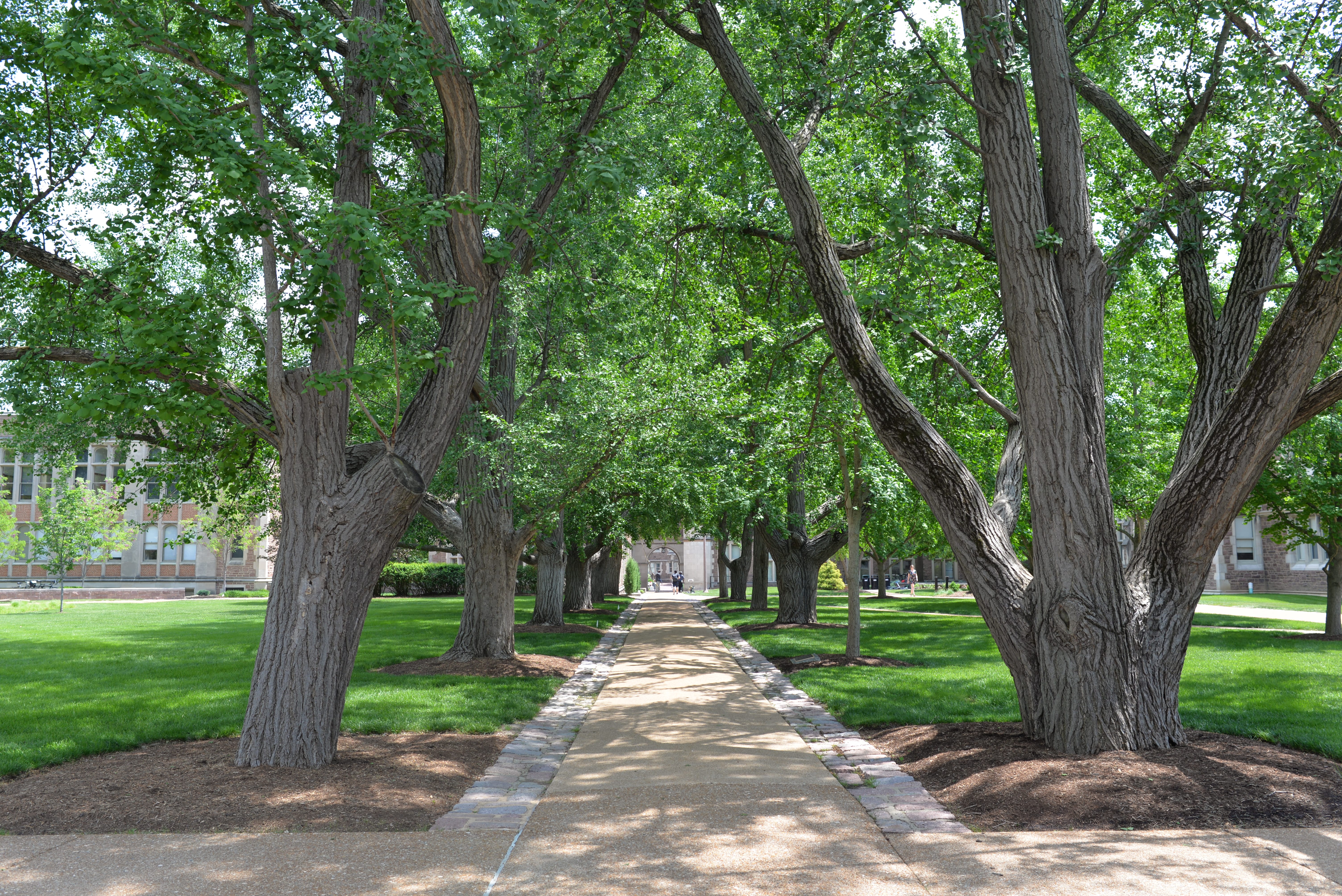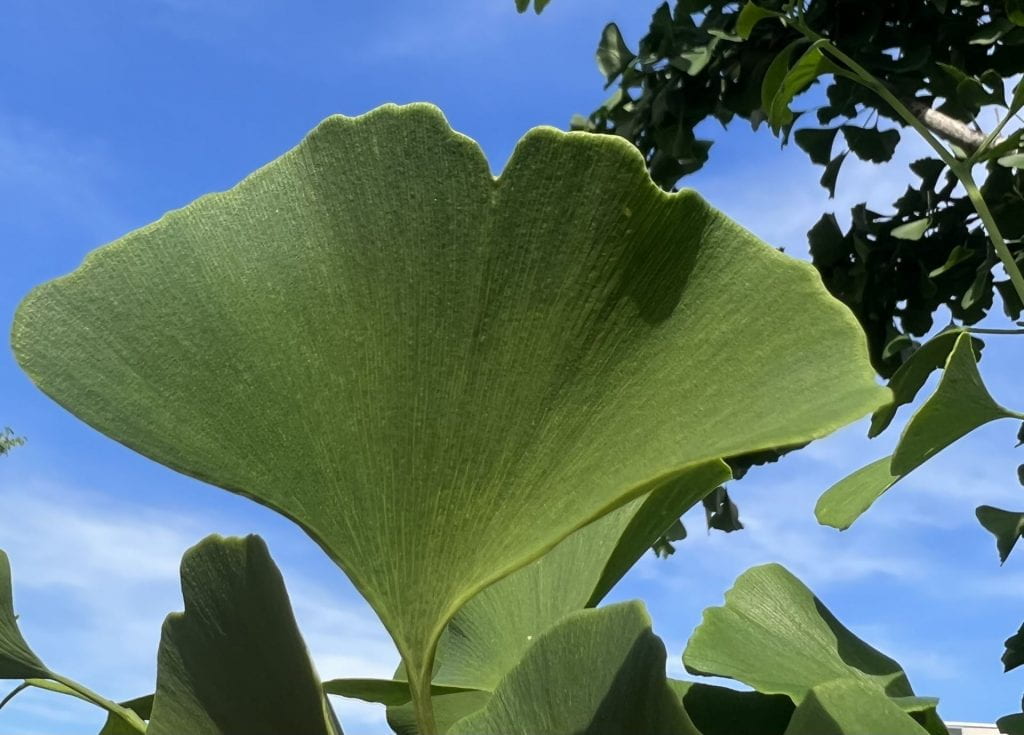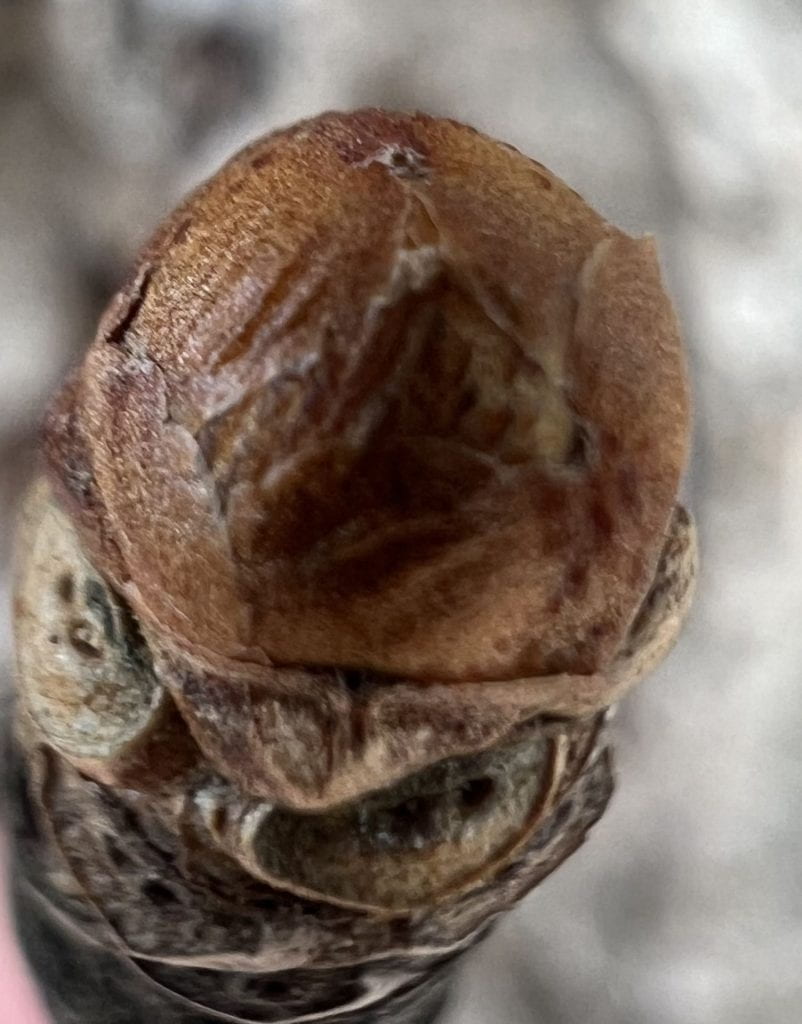Ginkgo
Arbor Walk #12, Treekeeper ID #1649

This tree’s unique fan shaped leaves turn brilliant golden yellow in fall. This adjacent group of Ginkgos forms a historic allée that was part of the original 1927 Cope and Stewardson Plan for the university campus. In the fall, students gather around the allée to enjoy the beautiful scenery of the synchronous falling leaves.
Read Howard Nemerov’s THE CONSENT about the Grinkgo.
More information on the Ginkgos in our Arboretum here and here!


GPS Coordinates
N/A
Percent Concrete
N/A
Distance to Buildings
| Year | Close Building #1 | Close Building #2 | Close Building #3 |
|---|---|---|---|
| 2020 | Olin Library, 24.84 m | Eads Hall, 27.71 m | Ridgley Hall, 46.82 m |
Distance to Other Species
| Year | Close Species #1 | Close Species # 2 | Close Species # 3 |
|---|---|---|---|
| 2020 | Ginkgo, 9.20 m | Ginkgo, 5.89 m | Ginkgo, 9.17 m |
Standard Measurements
| Year | Height (m) | DBH (cm) | Caliper (m) | Crown Diameter N-S (m) | Crown Diameter E-W (m) | Average Crown Diameter (m) |
|---|---|---|---|---|---|---|
| 2020 | 19.5686 | 84.39 | N/A | 14.89 | 15.96 | 15.425 |
| 2023 | 21.31 | 85.5 | N/A | 15.96 | 14.87 | 15.415 |
| 2024 | 23.52 | 86.3 | N/A | 16.72 | 16.69 | 16.705 |
Nests and Pests
| Year | Description |
|---|---|
| 2020 | A deep gash on the lower trunk was very red and ‘wet’ with rust Multiple varieties of moss, lichen, and dark algae on both trunk and old cut branch A wet stain under the bark may be bacterial wetwood Some areas of exposed wood appear warped and potentially chewed by insects Around the ‘warped’ wood, there is some potential fungal growth |
Leaf Identification
The Ginkgo has distinctive two-lobed, fan-shaped leaves with parallel veins. They are a bright green and turn a brilliant yellow in the fall.
Twig and Bud Identification
Ginkgo twigs are zig zag, maturing to a light gray color with vertical grooves and few to no lenticels. Buds are globular with broad scales at the base. In the winter, the buds turn reddish brown.
Bark Identification
The Ginkgo has light gray bark that fissures with maturity.
Cone and “Fruit” Identification
The “fruit” of the Ginkgo are apricot-colored, fleshy seed covers with silvery casts. They are messy and produce a repugnant odor. Since these trees are not true flowering plants, the “fruit” only grows on female trees and are not considered an actual fruit. Males produce pollen cones.
[photo forthcoming]
‘Saratoga’ Identification
The ‘Saratoga’ variety grows slower, is more narrow and pendulous, and is a more yellow/green color compared to the traditional tree.
[photo forthcoming]
‘Autumn Gold’ Identification
The ‘Autumn Gold’ variety has a brilliant gold color in the fall. These trees are shorter than wild-type ginkgos, only reaching 50′ at very tallest. It is an all-male cultivar, meaning that no “fruit” will be produced.
[photo forthcoming]























